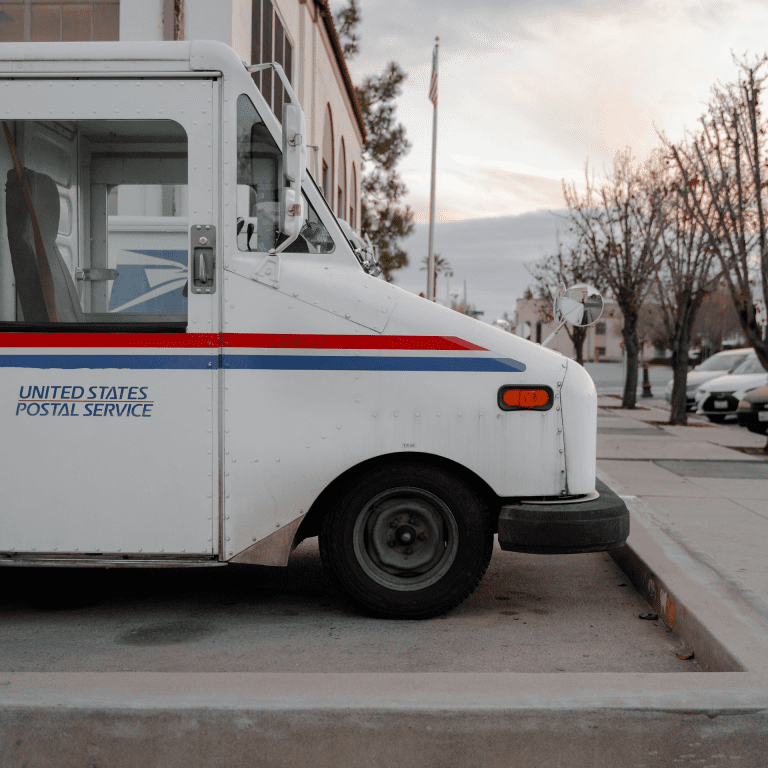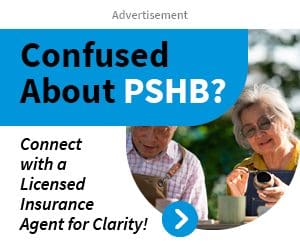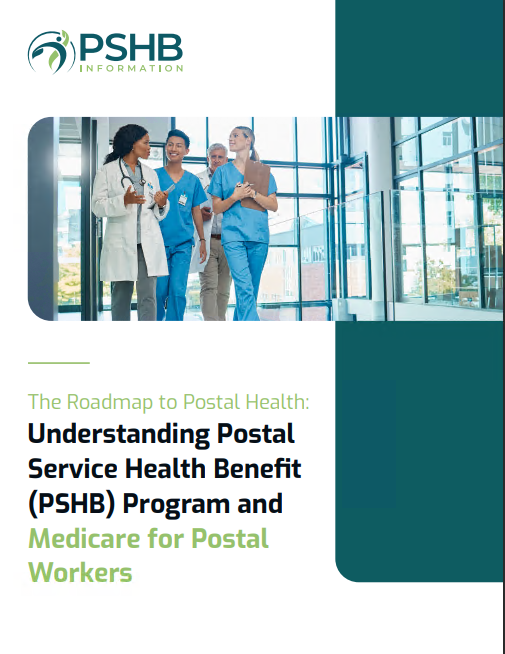Key Takeaways
-
The Postal Service Health Benefits (PSHB) program will replace FEHB for USPS employees and retirees in 2025, introducing a new approach to employee and retiree health coverage.
-
This shift offers a chance to reevaluate your health benefits and prepare for Medicare integration, ensuring better, more customized care options.
Major Changes to USPS Health Plans in 2025
The health insurance landscape for USPS employees and retirees is about to experience a seismic shift. With the introduction of the Postal Service Health Benefits (PSHB) program in January 2025, the previous Federal Employees Health Benefits (FEHB) plans for postal workers will no longer be available. This change is not merely procedural; it’s a reimagining of how healthcare benefits are tailored to meet the specific needs of postal employees, retirees, and their families.
You’ll need to make adjustments to ensure that your coverage aligns with these new requirements. Whether you’re active in the workforce, retired, or part of a family with USPS ties, understanding these changes is essential to optimizing your healthcare.
Key Differences Between PSHB and FEHB
The PSHB program is designed exclusively for USPS employees and retirees, making it distinct from the broader FEHB system in several ways:
-
Specialized Plans: The PSHB program’s plans are tailored to meet the unique healthcare needs of postal workers and their families. Unlike FEHB’s one-size-fits-all approach, PSHB prioritizes services postal employees frequently require, such as preventive care and cost-effective treatment for chronic conditions.
-
Mandatory Medicare Coordination: Retirees eligible for Medicare Part B must enroll to maintain PSHB coverage. This integration offers comprehensive benefits with lower out-of-pocket expenses, ensuring that your health needs are met without excessive financial strain.
-
Enhanced Prescription Benefits: With Medicare introducing a $2,000 out-of-pocket cap for prescription drugs starting in 2025, the new PSHB program emphasizes affordability for those managing long-term medication needs.
These differences mark an essential step forward in tailoring healthcare to USPS members. If you’ve been using FEHB, now’s the time to compare your options under PSHB to see what’s new.
Why Medicare Integration Is Crucial
Medicare plays an integral role in the upcoming PSHB program, especially for retirees and their families. If you’re nearing Medicare eligibility or already enrolled, the 2025 changes will affect how your benefits coordinate. Here’s what you need to know:
-
Part B Enrollment Requirements: If you’re Medicare-eligible, enrolling in Part B is no longer optional for PSHB coverage. By combining Medicare Part B with PSHB, you’ll enjoy more robust coverage while minimizing your out-of-pocket expenses for medical services.
-
Comprehensive Care Coordination: Medicare and PSHB together provide a more unified approach to healthcare. This ensures fewer gaps in coverage, making it easier to navigate your health plan—especially when you’re dealing with doctor visits, outpatient services, or hospital stays.
-
Predictable Drug Costs: The introduction of Medicare’s $2,000 cap on annual out-of-pocket prescription drug costs means you’ll no longer face unpredictable or exorbitant medication bills. This change is particularly beneficial for individuals managing chronic illnesses.
Ensuring you’re enrolled in Medicare Part B by the required deadlines is crucial. Missing this step could leave you with penalties or coverage gaps, so it’s better to act sooner rather than later.
Important Enrollment Dates to Remember
Navigating this new system involves meeting specific deadlines. Staying on top of these timelines will ensure you don’t encounter unnecessary complications. Key periods include:
-
2024 Open Season: Scheduled from November 11 to December 9, this is your chance to review and select a PSHB plan for the upcoming year. During this time, you can compare options and ensure you’re making the best choice for your healthcare needs.
-
Medicare Initial Enrollment Period (IEP): If you’re turning 65, your seven-month enrollment window begins three months before your birthday month and ends three months after. Enrolling in Medicare during this period will ensure seamless coordination with PSHB.
-
Special Enrollment Periods (SEPs): Life events such as losing other coverage or relocating can open a special enrollment window for you. These periods let you adjust your plan outside of the standard Open Season.
Understanding and acting on these dates is critical. Missing them could result in default enrollments or penalties, which might not meet your specific healthcare needs.
How These Changes Impact Retirees and Families
The shift to PSHB is designed to offer retirees and their families more focused and efficient healthcare options. If you’re a retiree, the emphasis on Medicare integration and tailored plans means you’ll experience:
-
More Comprehensive Coverage: With Medicare and PSHB working together, your healthcare coverage will include both essential and specialized services.
-
Lower Out-of-Pocket Costs: Thanks to new drug cost caps and coordinated care, retirees can expect more predictable and manageable medical expenses.
-
Simplified Plan Options: Gone are the days of navigating through dozens of general FEHB plans. PSHB’s offerings are streamlined to meet your unique needs, reducing confusion and improving access to the right care.
Families of USPS employees also benefit from these changes. The tailored nature of PSHB plans ensures that dependents’ healthcare needs are considered, providing a more cohesive and supportive healthcare environment.
How to Prepare for the PSHB Transition
The transition to PSHB is a significant change, and preparation is essential to avoid disruption in your coverage. Here’s how you can get ready:
-
Audit Your Current Coverage: Review the benefits you currently receive under FEHB and identify what’s most important to you, whether it’s low deductibles, prescription coverage, or access to specialists.
-
Understand Medicare Requirements: If you’re close to Medicare eligibility, confirm your Part B enrollment status. If you’re already enrolled, ensure it’s coordinated with your future PSHB plan.
-
Use Comparison Tools: Many resources will be available to help you compare PSHB plans side by side. Take advantage of these tools to evaluate premiums, coverage details, and additional benefits.
-
Act During Open Season: Open Season is your golden opportunity to finalize your health plan for 2025. Don’t miss this window to choose the best option for your needs.
Starting early and staying informed are your best defenses against unexpected issues.
What Happens If You Don’t Act?
Failing to engage with these changes could lead to several complications:
-
Automatic Enrollment: If you don’t select a PSHB plan during Open Season, you may be automatically enrolled in a default option. While this ensures you have coverage, it might not be the best fit for your healthcare needs.
-
Medicare Penalties: Delayed enrollment in Medicare Part B can result in lifelong penalties that increase your monthly premiums.
-
Gaps in Coverage: Without proper coordination, you risk facing coverage lapses or unexpected out-of-pocket expenses.
To avoid these issues, it’s essential to take proactive steps and engage with the enrollment process fully.
Maximizing the Benefits of PSHB
The PSHB program presents a unique opportunity to reassess your healthcare needs and make the most of what’s available. To maximize your benefits:
-
Stay Educated: USPS and OPM will provide resources to guide you through the changes. Read up on plan details, webinars, or other tools they offer.
-
Communicate with Representatives: If you have questions, don’t hesitate to reach out to USPS or OPM representatives who can provide clarity on plan specifics.
-
Plan Financially: Factor in the costs of Medicare Part B premiums and any associated PSHB plan costs to ensure your budget accommodates your new healthcare structure.
-
Be Proactive: The earlier you address these changes, the more smoothly your transition will go. Procrastination could lead to missed opportunities or unexpected complications.
Taking these steps will help you navigate the switch to PSHB with confidence.
Shaping the Future of USPS Benefits
The transition to the PSHB program is more than just a change—it’s a chance to align healthcare benefits with the unique needs of USPS employees and retirees. By understanding the new plans, integrating Medicare, and acting on key deadlines, you can secure coverage that works for you and your family.









